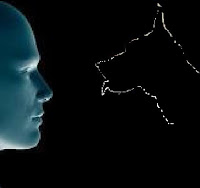Human Language and Other Systems of Animal Communication -- Understand the Similarities and Differences Between the Two
A prominent characteristic of language is that the relation between a linguistic sign and its meaning is arbitrary: There is no reason other than convention among speakers of English that a dog should be called dog, and indeed other languages have different names (for example, Bengali kukur, Spanish perro, Russian sobaka, Japanese inu). Again Language can be used to discuss a wide range of topics, a characteristic that distinguishes it from animal communication. One of the best ways to understand what human language is to compare it with other systems of animal communication and try to understand the similarities and differences between the two.
Use of sound signals
The use of sound signals is perhaps the most obvious characteristic of human language. But this feature is neither unique to human beings nor all-important. It is not unique to humans as a lot of other animals also use sounds for communication. And it is not all-important because human beings can transfer language to visual symbols (as in the case of sign language, or writing) and to tactile symbols (as in the case of Braille). So this characteristic is of little use in distinguishing human communication from animal communication.
Arbitrariness
In the case of animals there is generally an apparent relation between the signal and the message the animal wishes to convey. For example, an animal who wishes to warn off an opponent will generally simulate an attacking attitude. A cat, for example, will arch its back, spit and appear ready to pounce.
On the other hand, if we look at human language carefully, we see that except in the case of onomatopoeic words or expressions, there is no logical relationship between the signal and the message. The symbols used by human beings are arbitrary. For example, there is no logical relationship between the word ‘water’ and the thing it symbolizes. Had there been an intrinsic or logical relationship between the two, then why the same thing would be called ‘pani’ in Hindi? This is the more interesting to note that in Hindi there is another word for water i.e., ‘jal’.While other animals use a limited range of sounds or signals to communicate, humans have developed complex systems of language that are used to ensure survival, to express ideas and emotions, to tell stories and remember the past, and to negotiate with one another.
Etymology
The description and classification of the different words we use in speaking and writing. This is known as Etymology. The term properly means " a discussion of the true source of a word ; " but, by writers on language, its meaning has been extended to include the classification of words, the consideration of their changes of form, and the history of then- growth.
Syntax
An account of the ways in which words are properly combined to express our thoughts and feelings. This is known as Syntax; the term literally means” a putting together."
Phonology
An account of the Sounds and Alphabet of the language—how our spoken words are correctly sounded, and how they are represented by letters.


Comments
Post a Comment
Drop any query, suggestion or comment here.